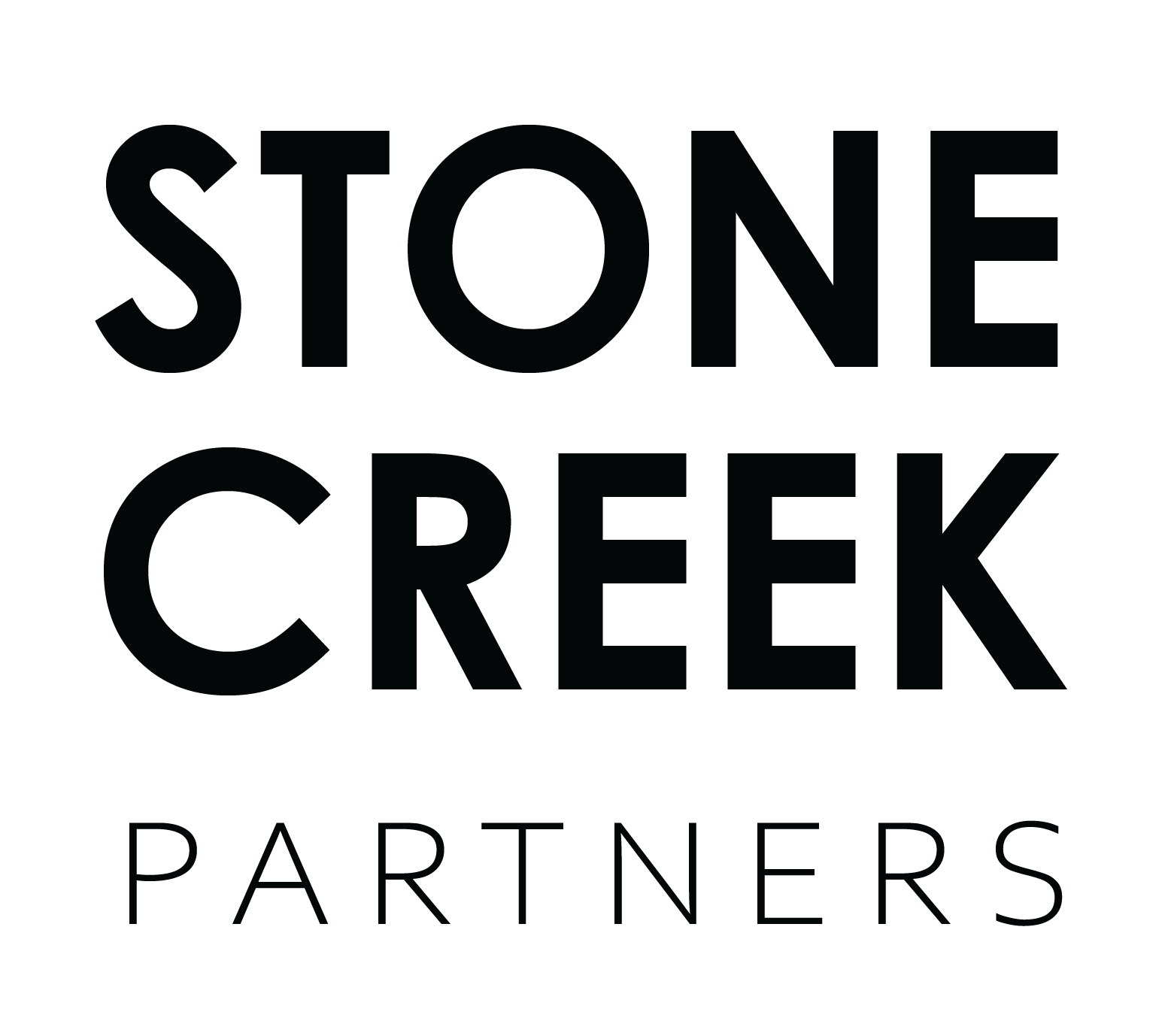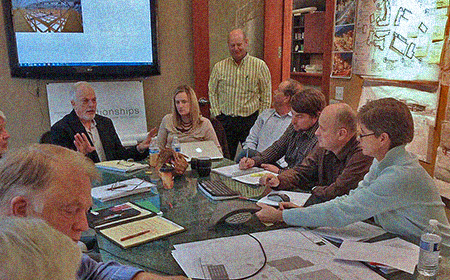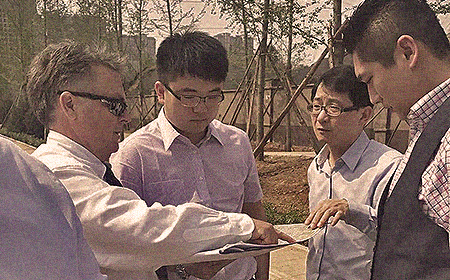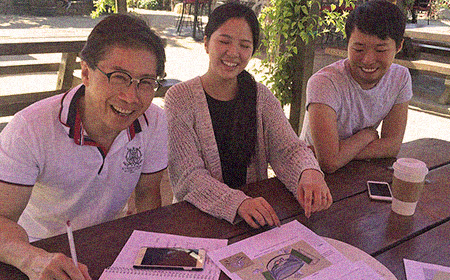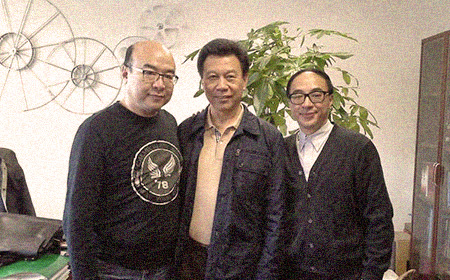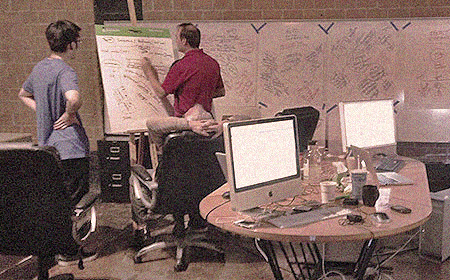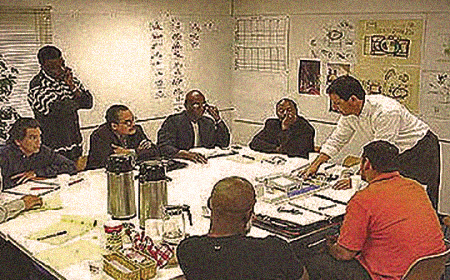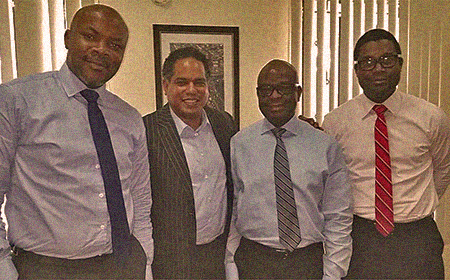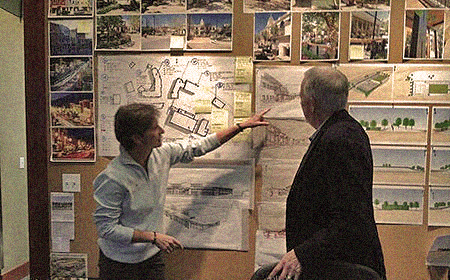
Design Charrettes
At times loosely applied, the term charrette derives from the French for “little carts” that moved through French design classrooms.What is a design charrette? The word, charrette, is now used to describe many types of participatory workshops and meetings. A French word, charrettes were the “little carts” that moved through the classrooms of French art and design students that collected student projects for review by their instructors.
Charrettes typically involve participants drawn from multiple disciplines, in a multi-session “iterative” process. Charrettes today are often conduct within one long working day, but just as often consist of multi-day sessions.
Charrettes are group “shared experiences.” Participants share their work, analysis, and ideas, drawn from their point-of-view, with other participants. The group works through various ideas, typically creates all-new approaches inspired from the group experience, and seeks solutions that will be embraced the group as a whole. Because of the group approach and active participation by all, as well as the very nature of such immersive experiences, solutions developed during charrettes are often consensus-based and enthusiastically embraced.
The charrette process is often applied to public policy workshops, or to design processes where project scope or the number of participants creates complexity in reaching design solutions. Whatever the reason, because of the communal spirit of the charrette process, conclusions reached in charrette sessions are often unusually lasting for stakeholders.
StoneCreek Partners typically recommends that project feasibility be an integral aspect of the charrette process, including issues of market support, customer receptivity, financial performance, and investor/lender underwriting suitability. This creates a more rigorous approach to the charrette session – requiring that the feasibility of implementation always be in the background as the process ensues. Towards this end, we also prize participants that focus on overall strategic marketing considerations, very much in the “Peter Drucker” sense. That is, in approaching solutions, what aspects create a sustaining competitive advantage for the project in the marketplace? Strategic marketing sensibilities, like core feasibility, should be integrated in all charrette proceedings.
A key aspect of charrettes is a solid understanding of the client’s objectives in the process. When charrettes are employed in the design process for a non-public client, strong owner/investor input and direction to the process is required so that the owner gets a solution that is attractive to pursue.
Charrettes are sometimes loosely described as brainstorming sessions, or product concepting workshops, but this may not in fact be accurate. Charrettes are a particularly form and process of group decision-making, distinct in several ways from how brainstorming and product concepting are actually conducted in group settings.
So, what is a design charrette? It is all or part of all these things as explained.
Charrette FAQ’s
So, more on “what is a design charrette?
A charrette is solution-oriented. The breadth of background of participants assures full discussion of issues, interrelationships, and impacts. Its time limits challenge people to rapidly, openly, and honestly examine the problem and help potential adversaries reach consensus on an appropriate solution.
A charrette produces visible results. It is often used early in a planning process to provide useful ideas and perspectives from concerned interest groups. In mid-process, a charrette helps resolve sticky issues. Late in the process, it is useful to resolve an impasse between groups.
Charrettes generate alternative solutions to problems. The setting encourages openness and creativity.
Anyone can participate in a charrette. A wide range of people with differing interests should attend. Traditional participants represent organized groups, but individuals with any stake in the issue should be encouraged to attend.
How people participate depends on the charrette leader. An experienced leader assures that a range of views is heard. The leader invites people to take a stance and present their points of view. All participants are assured an opportunity to speak out, and the leader encourages even the most reticent participant to speak up without fear of rebuke or ridicule. The open, free-wheeling charrette format encourages enthusiasm and responses.
A charrette sharpens agency understanding of the perspectives of interest groups. Early in project formulation, a charrette offers a glimpse of potentially competing demands and can be a barometer of the potential for consensus. Thus it helps generate alternatives and identify issues. In Minnesota and Alabama, for example, State agencies respond to the needs of individual towns by providing experts for weekend charrettes.
A leader experienced in charrette techniques is a must. To avoid chaos in a charrette, a high level of discipline is required. The charrette leader should be familiar with group dynamics and the substantive issues the group faces. The leader tailors the setting, background materials, and issues to the goal of the charrette and elicits participation from all group members within the allotted time. One or two staff people should be available for support to the leader and to supply data and information.
Is a charrette flexible? A minimum of four hours is essential for a charrette focused on a modest problem. While the average ranges from one to several days, some agencies hold one- and two-week charrettes or organize them as multiple sessions over a period of time.
A charrette occurs at any time in a planning process, but preparation is crucial. Advance work can take a month or more, depending on the issue to be discussed. Charrette materials are flexible and should be tailored to the focus of the meeting.
Because it focuses on a specific problem to be resolved or issue to be addressed, a charrette is usually a one-time event. Thus, the invitation list and timing must be thoroughly considered and discussed to maximize interaction through broad-based participation. Goals must be made clear so the expectations do not exceed possible results. The depth of analysis from a single short session can be disappointing. Follow-up work must be carefully considered both before and during a charrette.
When is a charrette most effective? A charrette can resolve an impasse. During such a use, neutral participants should be involved to bring fresh ideas for consideration. When a problem is immediate, a charrette is effective because people are vitally interested in the outcome. For maximum effect, a charrette should have the approval of elected officials, agency heads, and community groups.
